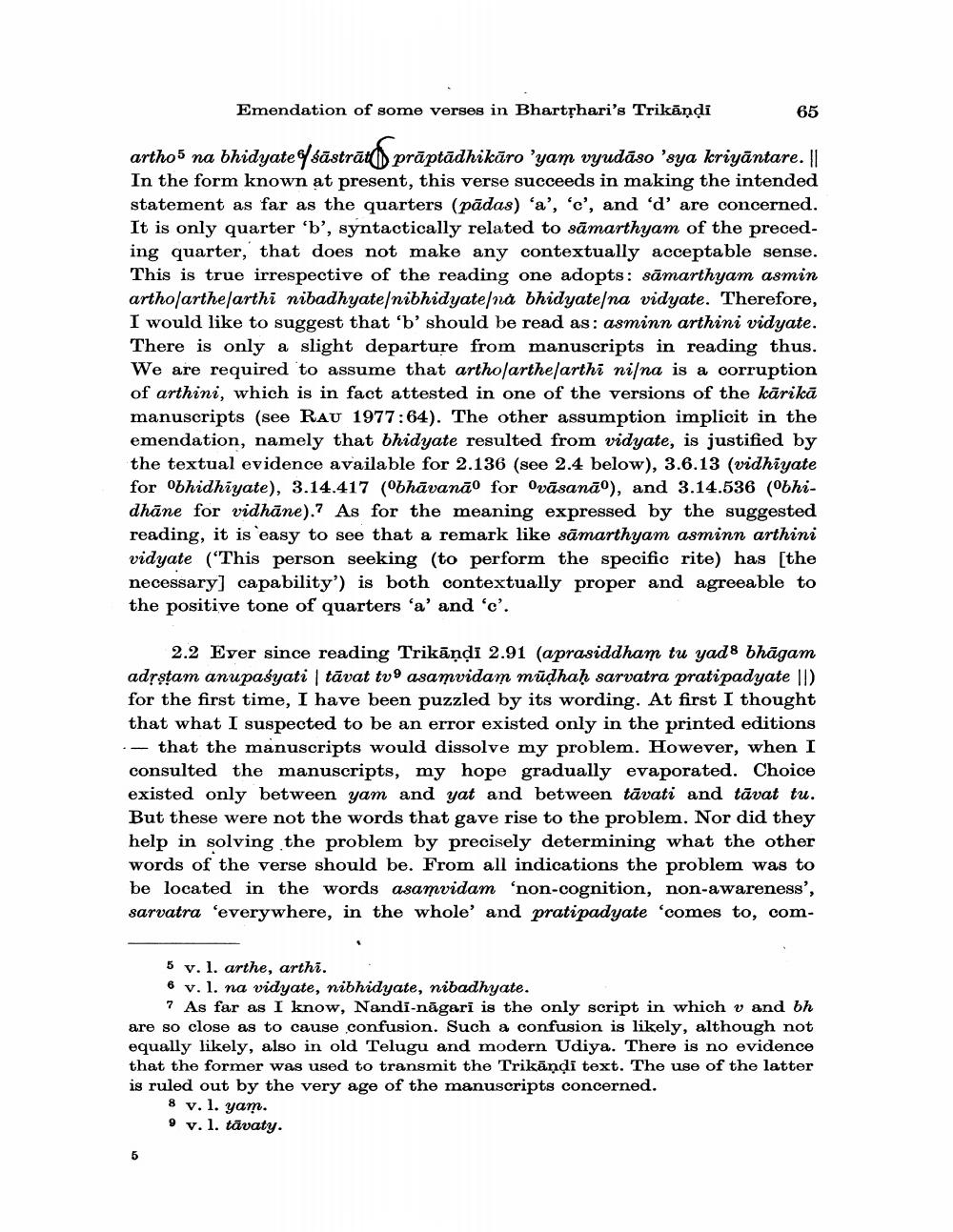Book Title: Emendation Of Some Verses In Bhrtharis Trikandi Author(s): Ashok Aklujkar Publisher: Ashok Aklujkar View full book textPage 3
________________ Emendation of some verses in Bharthari's Trikāņdi 65 artho5 na bhidyateśāstrāli) prāptādhikāro 'yam vyudāso 'sya kriyāntare. Il In the form known at present, this verse succeeds in making the intended statement as far as the quarters (pādas) 'a', 'c', and 'd' are concerned. It is only quarter 'b', syntactically related to sāmarthyam of the preceding quarter, that does not make any contextually acceptable sense. This is true irrespective of the reading one adopts: sāmarthyam asmin artho/arthesarthi nibadhyatenibhidyatená bhidyate/na vidyate. Therefore, I would like to suggest that 'b' should be read as: asminn arthini vidyate. There is only a slight departure from manuscripts in reading thus. We are required to assume that artho/arthe arthi ni/na is a corruption of arthini, which is in fact attested in one of the versions of the kārikā manuscripts (see RAU 1977:64). The other assumption implicit in the emendation, namely that bhidyate resulted from vidyate, is justified by the textual evidence available for 2.136 (see 2.4 below), 3.6.13 (vidhiyate for bhidhiyate), 3.14.417 (°bhāvanā for Ovāsanā°), and 3.14.536 ("hidhāne for vidhāne). As for the meaning expressed by the suggested reading, it is easy to see that a remark like sāmarthyam asminn arthini vidyate ('This person seeking (to perform the specific rite) has [the necessary] capability') is both contextually proper and agreeable to the positive tone of quarters 'a' and 'o'. 2.2 Ever since reading Trikāņdi 2.91 (aprasiddham tu yad bhāgam adrstam anupaśyati stāvat tv asamvidam mūdhaḥ sarvatra prati padyate II) for the first time, I have been puzzled by its wording. At first I thought that what I suspected to be an error existed only in the printed editions .- that the manuscripts would dissolve my problem. However, when I consulted the manuscripts, my hope gradually evaporated. Choice existed only between yam and yat and between tāvati and tāvat tu. But these were not the words that gave rise to the problem. Nor did they help in solving the problem by precisely determining what the other words of the verse should be. From all indications the problem was to be located in the words asamvidam 'non-cognition, non-awareness', sarvatra 'everywhere, in the whole' and prati padyate "comes to, com 5 v. l. arthe, arthi. 6 v. 1. na vidyate, nibhidyate, nibadhyate. 7 As far as I know, Nandi-nāgari is the only script in which v and bh are so close as to cause confusion. Such a confusion is likely, although not equally likely, also in old Telugu and modern Udiya. There is no evidence that the former was used to transmit the Trikāndi text. The use of the latter is ruled out by the very age of the manuscripts concerned. 8 v. l. yam. 9 v. 1. tavaty.Page Navigation
1 2 3 4 5 6 7 8 9 10 11 12
